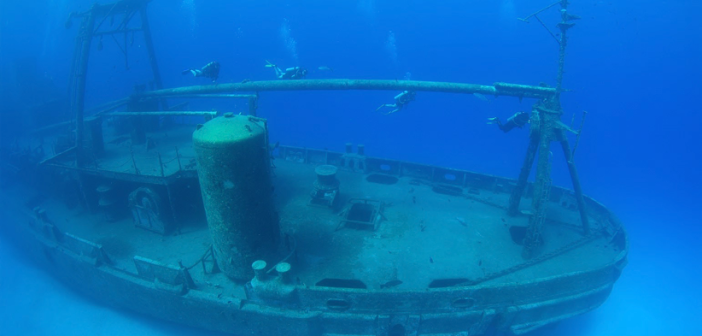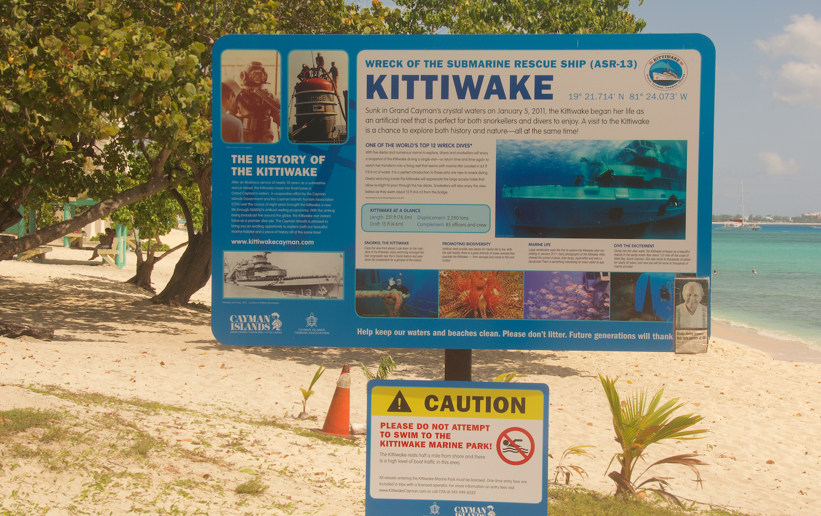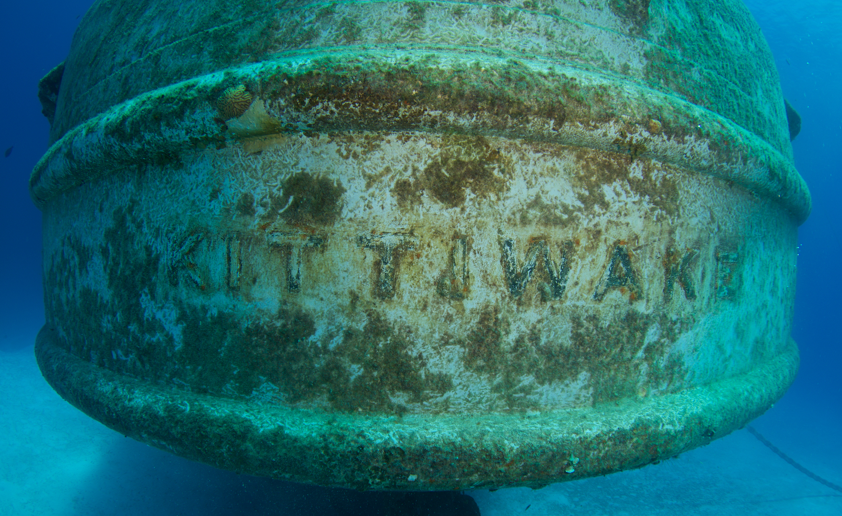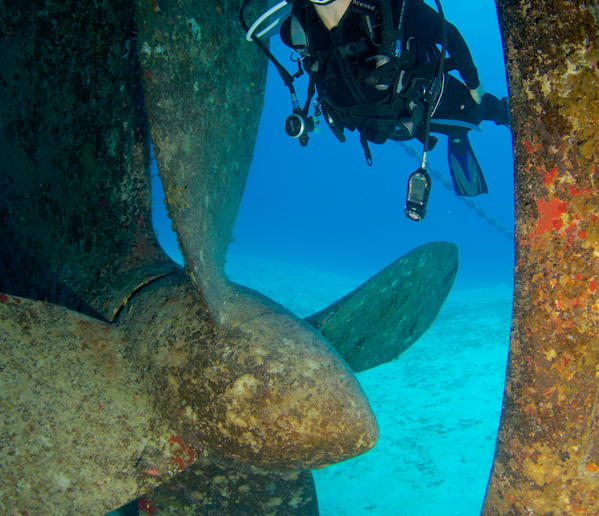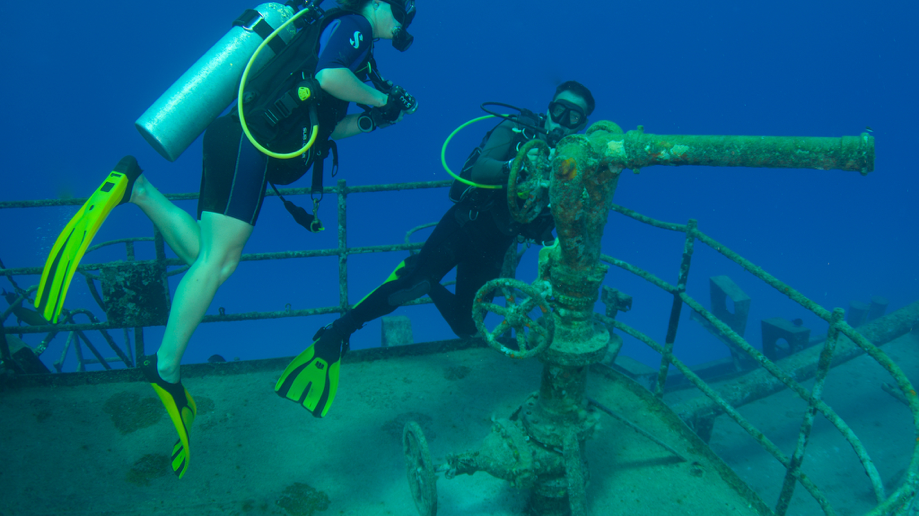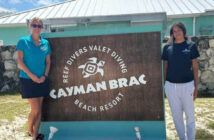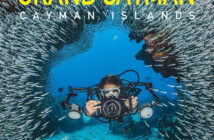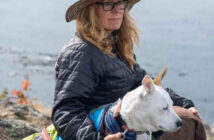The Kittiwake is an impressive wreck dive located just off the ‘Public Beach West Bay Dock’ at the north end of Seven Mile Beach. This is the latest addition to Grand Cayman’s arsenal of excellent wreck dive sites. She is easily accessible and sits upright in 62 feet of water on a sand bottom. A dive on this old girl is always interesting and almost always provides a few new wrinkles.
The Kittiwake has been designated as a National Cayman Islands park and attraction managed by the Cayman Islands Tourism Association. The USS Kittiwake is a former U.S. Navy submarine rescue vessel. It was commissioned in 1944 and launched into the American Naval Fleet in 1945. In her prime she was a five-deck submarine rescue ship with a compliment of ninety-eight enlisted men and ten officers serving aboard. The ship was decommissioned on September 30, 1994, after 50 years active service. It took the Cayman Islands Tourism Association and their point person, Nancy Easterbrook (DiveTech), eight years to apply for and receive the donation of the vessel from the Navy, clean it of military gear and hazardous waste, and pass both U.S. and Cayman Islands environmental tests. There is a plaque on the wreck that lists all of the operators and other entities that assisted in bringing the Kittiwake to the Caymans as a natural reef. There is also a message of special thanks to the “dedication and tenacity of Nancy Easterbrook” etched into the deck near the bow, commemorating her efforts to bring the Kittiwake to the Grand Cayman. The wreck was actually sunk in January of 2011.
I have been fortunate to make many dives on the Kittiwake and there is always something different to see and experience. Make sure that you have a dive light if you anticipate penetrating the interior of the wreck. Although the wreck sits only a half-mile from the shore, divers and snorkelers are prohibited from swimming to the wreck from the shore because of the high volume of boat traffic in the area. As you approach the wreck, either by dropping down the mooring line attached to the ship or via a short swim from where your boat is moored, you will almost always encounter a variety of interesting marine life. You will often see a school of horse-eye jacks cruising her outer perimeter or encounter large silvery tarpon cruising above decks.
Begin your dive at the bow of the ship and follow the port side to check for schools of fish and other marine life hanging around the upper decks. When you approach the aft section look for the nameplate prominently displayed on the stern and then drop to the bottom to take a close look at the large screw and rudder, which are still intact.
Continue your dive around the starboard side of the ship. You will encounter a large cutout at a depth of about 45 feet. Enter the interior and begin exploring the various decks. The first time you visit the wreck, it is a good idea to follow the route taken by your guide.
The 251-foot ship is sitting upright on a sandy bottom in just 62 feet (18m) of water, meaning her smokestack is less than a dozen feet below the surface. Originally the ship rested in about 64 feet of water, but storms have moved the wreck into slightly shallower water. In preparing the wreck, care was taken to make much of the ship accessible to divers. Obstructions like hanging wires, bulkhead doors and other things that can snare or trap divers have been removed. Also, because the Kittiwake is in a marine preserve where fishing is not allowed, the ship is free of dangerous monofilament fishing line that decorates wrecks frequented by fishermen.
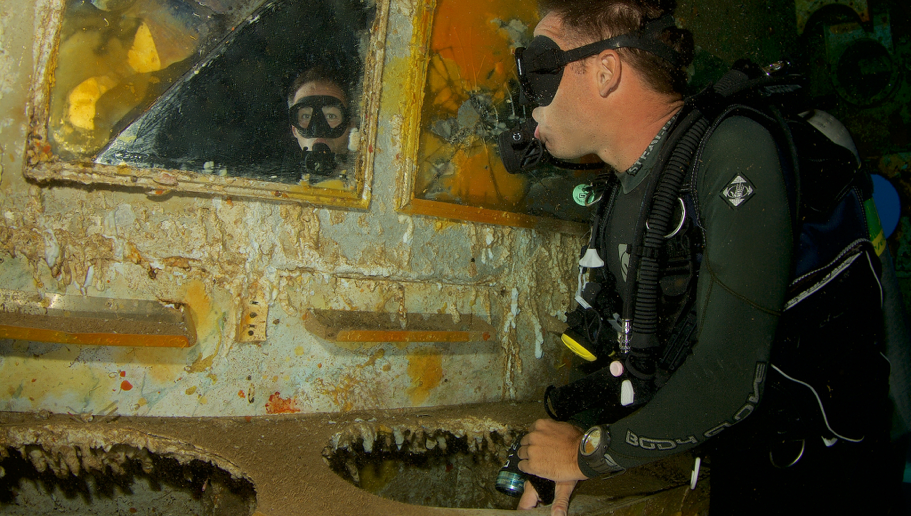
You can stop into the restroom during the dive to wash up and maybe look into the mirror to check if your mask is straight. ©2015
After taking a close look at the rudder and large screw at the stern of the ship, you can explore the inside of the wreck. There are five decks to explore. You can navigate the interior of the ship, including the rec room, mess hall, ironing room, ammunition lockers, bathrooms with mirrors and workshop, as well as other spaces. Take a close look at the two separate recompression chambers that had been used by crewmembers, which now sit side by side on one of the lower decks. Divers can enter these chambers two at a time, and actually pop up into air pockets that have been formed by the accumulation of diver’s exhaust bubbles. It not a good idea to try to breathe the air in these pockets, so keep your regulator in your mouth. The wheelhouse that is currently affixed to the wreck is not the original, but was taken from another vessel. There are lots of other features of the wreck to check out, including a water cannon on the main deck.
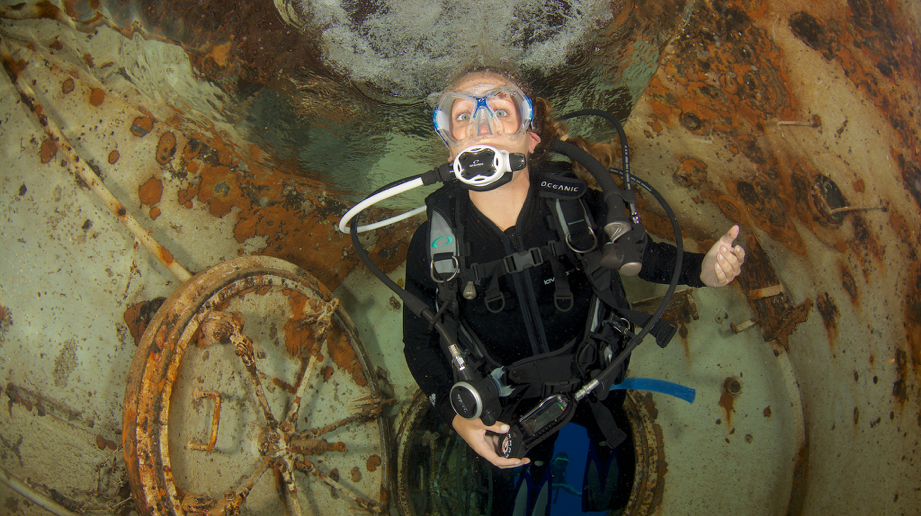
A diver enters one of the recompression chambers on the Kittiwake, her exhaust bubbles adding to the air-pocket inside the chamber. ©2015
Divers will encounter an assortment of marine life inside the wreck, including grouper, blackjacks, tarpon, horse-eye jacks and large green moray eels. Schools of baitfish can often be found in the interior, especially during the summer months. The wreck site also attracts sea turtles, schooling horse-eye jacks, eagle rays, Tarpon, and barracuda swimming around the exterior of the wreck. Because it’s shallow and the water is clear, the Kittiwake also makes a fascinating snorkel site. It is also frequently used as a night dive site.
Divers and Snorkelers visiting the Kittiwake site are required to pay the following entry fees, and must use a licensed dive/snorkel operator. The cost of the fee is $8.00 for Scuba Divers and $4.00 for Snorkelers. Scuba Divers and snorkelers are given yellow plastic tokens to carry as tickets to dive the Kittiwake. Kittiwake park admission fees are used for maintenance of the shipwreck, safety equipment and management of this attraction. A portion of these fees goes to the Cayman Islands marine environmental contingency fund.




